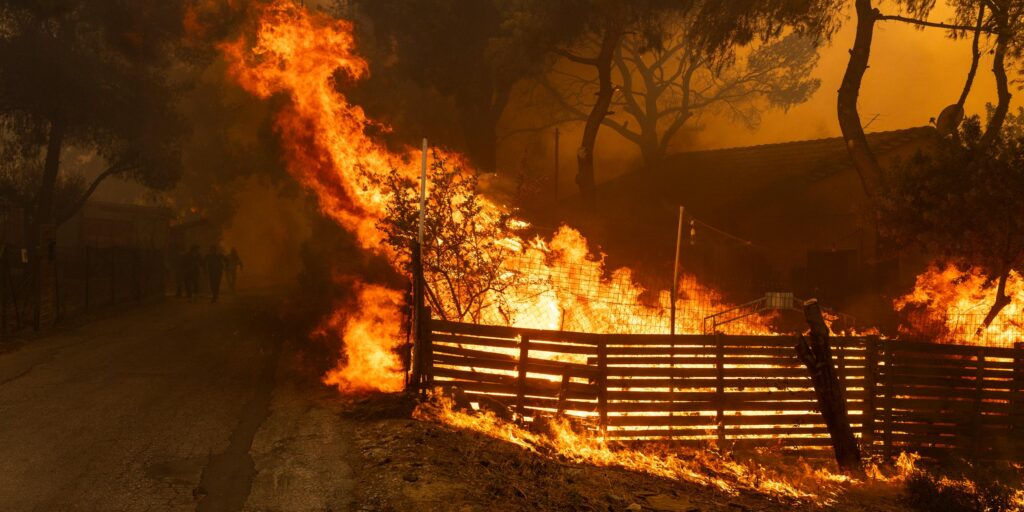Thousands of residents have been forced to evacuate their homes as massive wildfires engulf the suburbs of Athens, with flames reaching heights of up to 25 meters (80 feet). The blazes have severely impacted nearby towns such as Varnavas and northeastern areas of the Greek capital, including a school in Nea Penteli.
As night falls, aerial firefighting efforts have been grounded due to limited visibility, shifting the focus to ground operations. Residents have expressed frustration over the inadequate number of fire trucks and firefighters, prompting Greek authorities to seek international assistance.
Help is on the way from several countries. Spain, Italy, Turkey, Romania, and Canada are sending aid, with France contributing a Super Puma utility helicopter and the Czech Republic deploying 75 firefighters along with 25 vehicles.
In an unprecedented move, Athenians are wearing masks to shield themselves from the thick, choking smoke that has blanketed the city. A coordinated human chain of firefighters, volunteers, police officers, and residents is working tirelessly to combat the flames, with some using tree branches and other makeshift tools.
The fire’s rapid spread is being fueled by strong winds, which are reaching up to seven on the Beaufort scale, equivalent to a moderate gale force. The wind has also caused burning pine cones to scatter, exacerbating the fire’s spread.
Authorities have issued evacuation orders for thousands of residents over the past 24 hours. Some individuals have defied these orders in a desperate attempt to save their homes. Emergency services have sent localized evacuation alerts to residents in the northern suburb of Dionysos, advising them to head toward nearby Kifissia. A total of 30 such messages have been dispatched.
On Sunday, residents of towns and villages, including the historic site of Marathon, were also instructed to relocate to safer areas. Over 700 firefighters, 119 vehicles, and numerous soldiers have been deployed to tackle the blazes, with many volunteers also joining the effort.
The fires are particularly intense around Mount Penteli, known for its marble quarries, and the neighboring suburb of Penteli, where three hospitals have been evacuated. The National Observatory of Athens in Penteli is also at risk as the flames encroach on its facilities. A fire at a timber factory, which is adjacent to an out-of-business petrol station, poses a significant danger due to the hazardous materials involved. Explosions from fuel tanks and gas cylinders have been reported in the area.
Parts of Athens remain shrouded in thick brown smoke. Greece has endured its hottest June and July on record, and Climate Crisis and Civil Protection Minister Vassilis Kikilias has warned that extremely dangerous weather conditions are expected to persist. Greek Prime Minister Kyriakos Mitsotakis has cut short his holiday to address the crisis.


